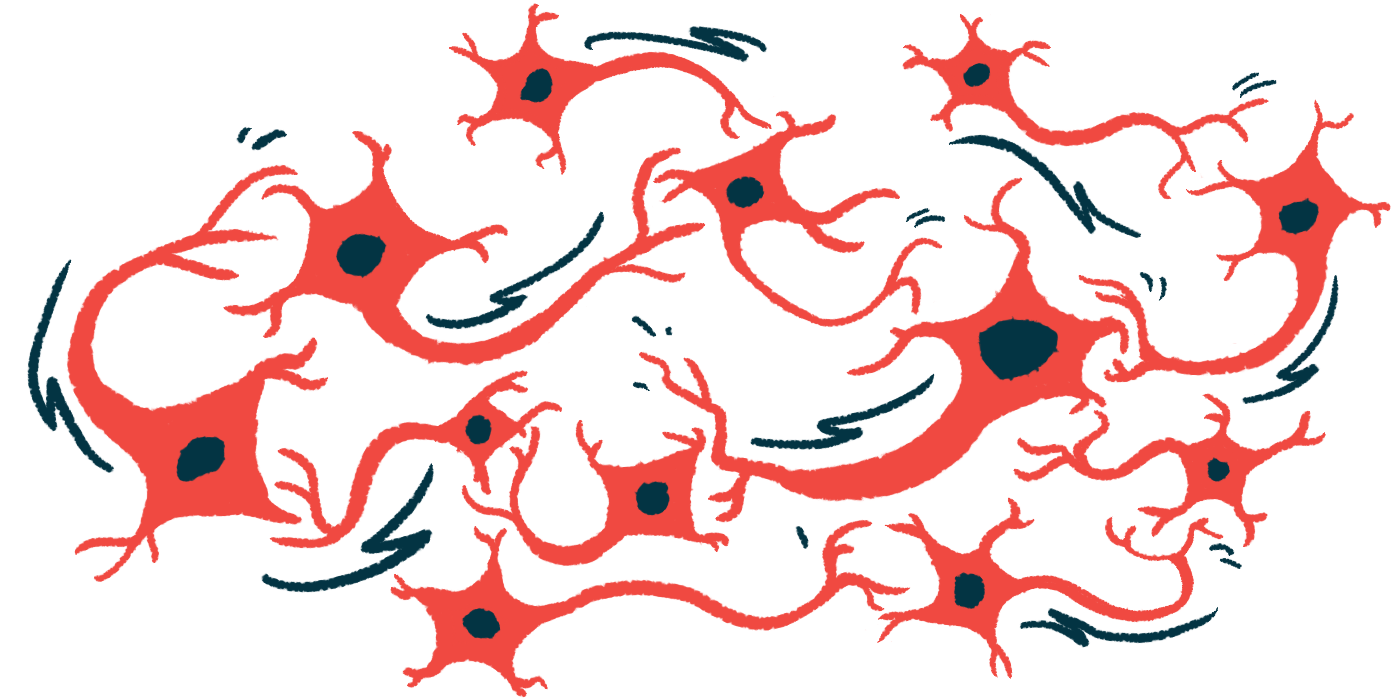Problems with workings of nuclear protein may drive nerve cell damage
hnRNP A1 involved in producing many proteins that support nerve cell health

Problems with the workings of a protein called hnRNP A1 drives nerve death in multiple sclerosis (MS) by affecting how nerve cells process RNA, a study reports.
RNA is an intermediary molecule that’s produced when genes are “read,” and it is used as a template for protein production. Abnormalities in the function of hnRNP A1 leads to problems in the production of many proteins that are needed to support healthy nerves.
The study, “hnRNP A1 dysfunction alters RNA splicing and drives neurodegeneration in multiple sclerosis (MS),” was published in Nature Communications.
Delving into how hnRNP A1 dysfunction can affect neurons in MS patients
Protein-coding genes contain sections called exons, which carry instructions for building proteins, as well as other sections known as introns that don’t code for protein but help to regulate the gene’s activity.
When a gene is “read” to make a protein, the entire genetic code is copied from a cell’s DNA into a temporary RNA molecule known as messenger or mRNA. The mRNA then undergoes a process called splicing, where the introns are cut out and the exons are stitched together to provide full instructions for making a protein.
hnRNP A1 — which stands for RNA binding protein heterogeneous nuclear ribonucleoprotein A1 — is a protein that binds to RNA to aid in splicing and other aspects of RNA metabolism.
Normally, hnRNP A1 is located in the nucleus, the compartment that houses a cell’s DNA. But a previous study in brain cells from people with MS found that this protein is wrongly localized outside of the nucleus. (That earlier study was done by many of the same University of Saskatchewan, Canada, scientists who led the current study.)
While the earlier work pointed to hnRNP A1 dysfunction in MS, the biological consequences of such dysfunction weren’t clear. These scientists now conducted a battery of experiments to find out.
They began with in-depth profiling of RNA isolated from neurons (nerve cells) in the brains of people with and without MS, looking particularly looked at a brain region called the cortex, where hnRNP A1 is known to be abnormally located.
“To our knowledge, this is the first study using RNA sequencing data from MS cortex to examine neuron-specific alternative splicing events,” the scientist noted.
Altered RNA levels for almost 550 genes evident in patients’ brain tissue
Brain tissue from MS patients had altered levels of RNA for nearly 550 genes — and the vast majority of these RNA molecules previously have been shown to interact with the hnRNP A1 protein. The researchers noted that many of the dysregulated genes are known to play important roles in maintaining nerve cell health, and many also are involved in regulating RNA metabolism.
Further experiments using a mouse model of MS showed dysregulation of many of these same genes. Experiments in the animal models also indicated that, in mice with more severe disease, hnRNP A1 was interacting with fewer of its usual RNA targets — suggesting that this protein’s ability to regulate RNA activity is deficient in MS.
“Importantly, we found that as the disease progressed, hnRNP A1 lost the ability to properly bind RNAs related to vital neuronal and RNA metabolic processes, which were significantly enriched in our human dataset,” the researchers wrote. These findings suggest “that hnRNP A1 dysfunction may directly impact neurodegeneration via loss of proper target RNA regulation.”
Further supporting this idea, work in cell models showed that a loss of hnRNP A1 function leads to problems with splicing of multiple key genes needed to support nerve health, ultimately causing neurodegeneration, the gradual sickening and dying off of nerve cells.
Collectively, data support the idea that problems with RNA regulation due to dysfunctional hnRNP A1 are a major driver of neurodegeneration in MS.
“We identified thousands of changes in RNAs that may contribute to hnRNP A1 dysfunction-mediated neurodegeneration. Given this, we hypothesize that MS- and hnRNP A1 dysfunction-associated neurodegeneration is not driven by alteration of a single mRNA transcript, but instead is a product of multiple mRNA alterations accumulating over months and years of dysfunction that are likely to have severe consequences for neuronal viability,” the researchers concluded.




